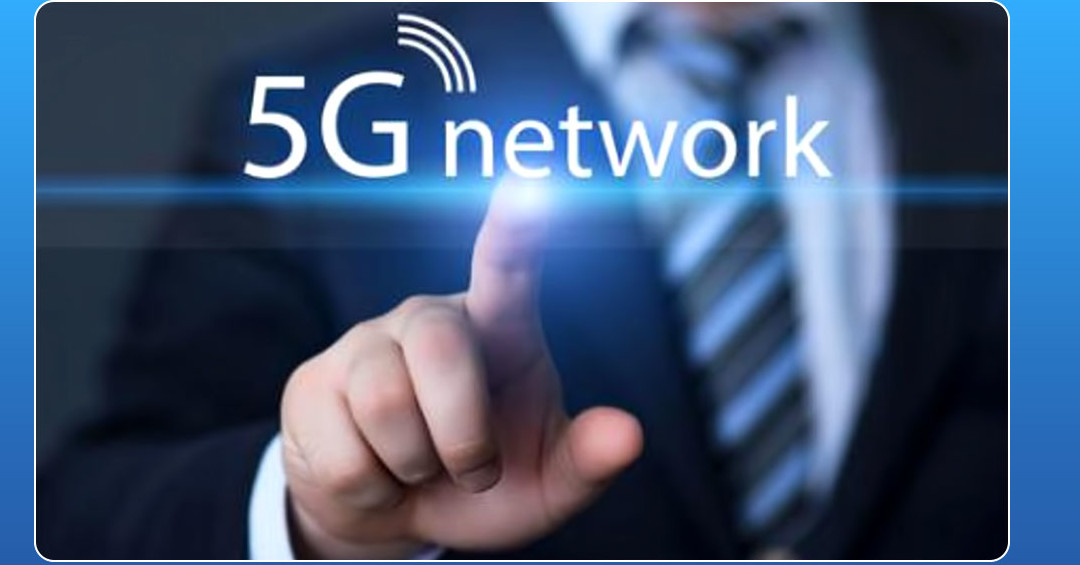5G is the fifth generation cellular technology that not only increases the downloading and uploading speed of the mobile network but it also reduces latency, which is the time taken by a network to respond, increases energy efficiency and offers more stable network connections.
When this Technology is fully deployed, it will provide a download speed of 1GBPS, which is at least 100 times more than the existing data speeds. To put it simply, This Technology will not allow you to download HD version of the movie but it also ensures that when we are watching movies online there will be less buffering. And since it will provide a wider area in the frequency spectrum, which is the range of frequencies where technologies such as LTE, Bluetooth,4G,3G, etc work, It will also ensure that there is no network congestion.
5G Technology will ensure that connectivity will come to a full circle, which means that everything is connected to every other thing. 5G networks are a digital cellular network, in which the service area covered by providers is divided into small geographical areas called cells. All the 5G in a cell communicate by using radio waves with a local antenna array and low power automated transceiver.
The 5G mobile cellular communication provides a far higher level of performance than the previous generation of the mobile communication system.
THE TRUE GOALS OF 5G TECHNOLOGY, BESIDES SPEED:
One key goal of this upcoming technology is to improve the quality of service and extend that quality over a broader geographical area, in order for the wireless industry to remain competitive against the onset of a gigabit per service coupled with Wi-Fi.
To make data transmission feasible telecom company are looking to move their customers into this advanced network technology.
STATUS OF 5G IN INDIA AND WHEN IT IS COMING:
India, traditionally been a late adopter of advanced technologies. We still are struggling to achieve the speed of the 4G network. In fact, 4G, speed in India are some of the worst in the world. It is highly unlikely that we will witness any major development in the upcoming year.
Rumors show that the Telecom Regulatory Authority Of India (TRAI) has started the process of auctioning the 5G spectrum in India. Meanwhile, analysts have predicted that India will fully adopt 5G by 2022.
The telecom company in the USA already started testing 5G in selected regions in the USA. Besides the USA, South Korea and Japan are also speeding to deploy 5G in their territories next year.
FEATURES OF 5G TECHNOLOGYSome of the main Features of 5G Technology:
- The 5G network offers a high resolution for crazy mobile users.
- 5G technology will be also providing subscriber supervision for fast action.
- The high-quality of services of 5G technology based on policy to avoid an error.
- It will be globally accessible.
- It will be having 6th sense technology.
- This technology will also support Virtual Private Network.
- The uploading and downloading speed of 5G technology will be at a higher level.
- Through remote management offered by 5G network, a user can get a fast solution.
- The 5G technology will be providing up to 1GBPS connectivity speed. It will also provide subscriber supervision tools for fast action.
- 5G technology will be providing large broadcasting of data in Gigabits which supports many connections.
DIFFERENCE BETWEEN 4G AND 5G TECHNOLOGY:
4G is the fourth generation of mobile communication technology. It provides dynamic information access to wearable devices. It supports data bandwidth in MBPS. Bandwidth per frequency is channel is up to 100Mhz. It provides CDMA multiple access. Speeds of 4G are further increased to keep up with data access demand used by various services. In 4G concatenated codes are used for error detection.
5G is the fifth generation of mobile communication technology. It provides dynamic information access to wearable devices. It supports data bandwidth in GBPS. Bandwidth per frequency channel is 28Ghz.5G provide CDMA & BDMA multiple access. This will provide very high speed as well as efficient use of available bandwidth to the customers. The quality of 5G technology based on policy to avoid errors.
CHALLENGES FOR 5G TECHNOLOGY:
- STANDARDIZATION: One of the big challenge faced by this advanced technology is standardization. There are already multiple groups working to come up with older technologies. While many companies agree that a global standard is needed.
- INFRASTRUCTURE: Building the infrastructure for this network is also a huge task, with issues around spectrum and installing new antennas. It is likely going to rely at least in part, on higher frequency bands. There is more space in those airwaves available, but at such high frequencies, signals can't travel as far as they can over the frequencies used for frequencies resulting in a poor connection.
- FREQUENCY BANDS: Current LTE system operates with more than 50 frequency bands which are below 3.5GHZ range. One of the frequency candidates for early deployment of 5G is 6GHZ range. The unlicensed spectrum below 6GHZ will be used for the fifth generation of 5G network.
- BEAMFORMING: In order to avoid transmission power wastage, new generation wireless transmission technology will use beamforming method to transmit data to user devices. Compared to conventional based stations, Beamforming technology will locate the user's location precisely and transmit signals to that direction using a sophisticated antenna array system.
- DEVICE TO DEVICE COMMUNICATION: It is a new communication concept to enhance mobile connectivity by using one mobile device as a data hub for another device which can't access the base station signal. It is considered the most efficient way of communication during emergency situations like natural disasters.
STAY TUNED FOR MORE UPDATES...
